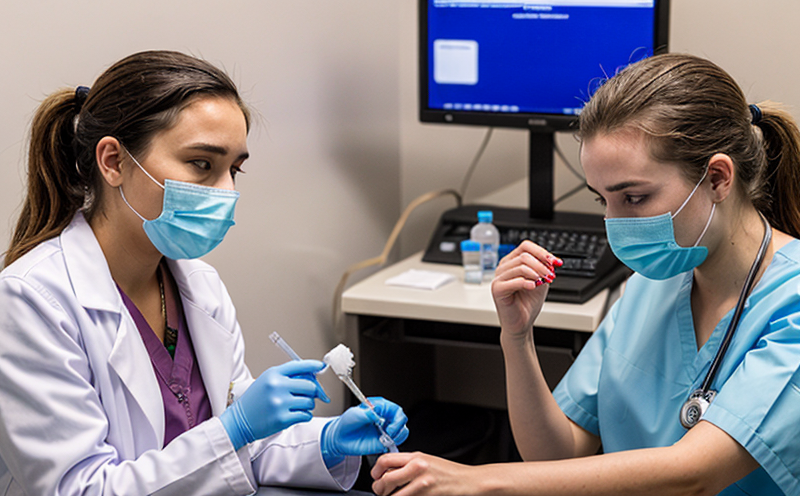WHO Antimicrobial Resistance Monitoring in Clinical Samples
The World Health Organization (WHO) has established a global surveillance system aimed at monitoring antimicrobial resistance (AMR), which is a critical issue affecting public health worldwide. The WHO's Global Surveillance System for Antimicrobial Resistance is designed to provide a comprehensive overview of AMR trends and patterns in human medicine, thereby informing evidence-based policies and interventions.
The clinical microbiology sector plays a pivotal role in this global effort by providing accurate and reliable data on antimicrobial resistance through the analysis of clinical samples. Clinical microbiologists use advanced laboratory techniques and methodologies to identify microorganisms responsible for infections and determine their susceptibility to various antibiotics. This process is crucial for guiding appropriate treatment decisions, which not only improves patient outcomes but also helps mitigate the development of resistant strains.
The testing involves a series of steps that begin with the collection of clinical samples such as blood, urine, sputum, or tissue biopsies from patients suspected of having an infection. These samples are then processed using standardized protocols and reagents to isolate potential pathogens. Once isolated, the organisms undergo antimicrobial susceptibility testing (AST) using methods like disk diffusion, broth microdilution, or Etest.
Another important aspect of this service is the use of molecular techniques such as polymerase chain reaction (PCR), next-generation sequencing (NGS), and whole genome sequencing (WGS) to identify specific resistance genes and characterize the genetic makeup of the isolated pathogens. This information is invaluable for understanding the mechanisms behind antimicrobial resistance and tailoring prevention strategies.
The results from these tests are compiled into a comprehensive report that provides detailed insights into the prevalence and distribution of resistant organisms across different regions and healthcare settings. This data is then shared with national and international health authorities to facilitate coordinated efforts in addressing AMR.
The process is governed by strict quality assurance protocols to ensure accuracy, reproducibility, and reliability of results. Compliance with standards such as ISO 15189:2012 for medical laboratories ensures that the testing meets high-quality benchmarks. The use of standardized reagents, proficiency testing programs like those provided by CLSI or EQA schemes, further reinforces the credibility of the data generated.
Understanding the global burden of AMR and its impact on public health is essential for developing effective strategies to combat this challenge. By leveraging advanced microbiological techniques and adhering to stringent quality control measures, clinical laboratories can contribute significantly to the WHO's global surveillance system. This service not only aids in providing timely and accurate information but also plays a vital role in shaping policies that can help curb the spread of resistant organisms.
Moreover, this monitoring serves as an early warning system for emerging resistance patterns, allowing healthcare professionals and policymakers to take proactive measures. It is a collaborative effort involving laboratories, clinicians, public health officials, and researchers worldwide, ensuring that the fight against AMR remains a priority in global health initiatives.
Why It Matters
The monitoring of antimicrobial resistance through clinical samples is crucial for several reasons. Firstly, it helps in tracking the spread and evolution of resistant organisms within communities and healthcare settings. This information is vital for understanding the dynamics of AMR and identifying regions or populations at higher risk.
- Public Health Implications: The ability to monitor resistance patterns allows public health authorities to implement targeted interventions such as infection control measures, vaccination programs, and antibiotic stewardship policies.
- Patient Care: Accurate susceptibility testing ensures that patients receive the most appropriate treatment, thereby improving outcomes and reducing the risk of adverse effects from inappropriate use of antimicrobials.
- Preventing Resistance: By identifying resistance early, healthcare providers can adopt strategies to prevent its spread, such as isolating infected patients and using alternative treatments where necessary.
The monitoring also supports research efforts aimed at developing new antibiotics and therapies. Understanding the genetic basis of resistance through molecular techniques provides valuable data for drug development and therapeutic innovation.
Furthermore, this service contributes to global health security by providing a standardized framework for reporting AMR trends. This transparency fosters international collaboration and ensures that resources are allocated effectively to combat AMR.
Industry Applications
- Hospital Infection Control: Hospitals can use this service to monitor the incidence of resistant organisms in their facilities, helping them identify and implement effective infection control measures.
- Pharmaceutical Industry: Pharmaceutical companies rely on this data to guide clinical trials and develop new antibiotics that are more effective against resistant strains.
- Veterinary Sector: Monitoring AMR in veterinary settings helps prevent the transfer of resistance genes from animal pathogens to human pathogens.
- Public Health Agencies: National health agencies use this information to formulate policies and strategies for controlling AMR at a national level.
The insights gained from monitoring antimicrobial resistance can also inform educational programs aimed at raising awareness about the responsible use of antibiotics. By providing evidence-based data, this service plays a crucial role in shaping public health initiatives and fostering a culture of antibiotic stewardship.
Quality and Reliability Assurance
- Standard Operating Procedures (SOPs): Compliance with SOPs ensures that all tests are conducted consistently, leading to reliable results. These procedures cover sample collection, processing, and analysis.
- Proficiency Testing: Participating in proficiency testing programs like those offered by CLSI or EQA schemes provides an independent assessment of the accuracy and precision of laboratory methods.
The use of certified reagents and equipment is another key factor in maintaining quality. Laboratories must ensure that all materials used meet recognized standards, such as those specified in ISO 15189:2012 for medical laboratories. Regular calibration and maintenance of instruments further contribute to the reliability of test results.
Training and certification of laboratory staff are also critical components of a robust quality assurance program. Personnel must be well-versed in both traditional microbiological techniques and modern molecular methods to ensure accurate and reproducible results.
The integration of bioinformatics tools for data analysis enhances the accuracy and utility of the information generated. These tools enable laboratories to manage large datasets efficiently, identify trends, and generate actionable insights from the monitoring process.





